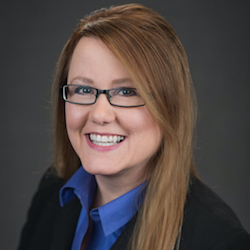
My husband is a big hockey fan. Sunday night, in the midst of the Stanley Cup finals and as he prepared to go out of town on a business trip for several days, we spent some quality time together watching the Nashville Predators beat the Colorado Avalanche to advance to the next round of the playoffs.
When the game was over, however, I opened up my laptop and navigated my way to the CBS website to watch a “60 Minutes” segment from earlier that night, about one couple’s experience with Alzheimer’s disease. (You can watch it here if you missed it.)
Most if not all of the people reading this blog have personally or professionally seen the devastating progression of the disease up close. It’s quite something to watch a 10-year progression of the disease in one person collapsed into a 13-minute TV segment, however.
Jonathan LaPook, M.D., the chief medical correspondent for CBS News and a professor of medicine at New York University’s Langone Medical Center, interviewed Mike and Carol Daly seven times in 10 years as Carol’s disease advanced.
“When Carol was still Carol, that would have been the best time to discuss the kind of caregiving decisions Mike Daly eventually had to face alone,” Dr. LaPook said. “Mike hopes that sharing such intimate details of their lives will help others be better prepared than they were.”
When we first meet Mike and Carol in 2008, Carol’s diagnosis is five years old. They already have an idea of what lies ahead because Mike’s mother had Alzheimer’s disease.
We hear about Carol’s memory issues, how she had to leave her job at a bank, how she no longer can cook or do some of the other tasks she had done at home, and how she no longer can watch films or read because she can’t concentrate.
In subsequent interviews, we hear about the disease progression and see some of it with our own eyes. Carol increasingly needs help with activities of daily living, needs “constant watching,” can’t remember her name or her husband’s name, and loses the ability to control her feet and hands. Eventually, she can’t carry on a conversation, then spends most of the day sitting in silence and is at risk for falls.
The “60 Minutes” segment does a good job of describing and showing what many professional caregivers experience every day. But it also spends time on an area that doesn’t always receive as much attention: the effects of the disease on family caregivers.
Mike gained almost 20 pounds from 2009 to 2011, for instance, and he started taking medication to help with anxiety and sleep.
By 2016, he was ignoring doctor’s wishes that he be hospitalized for health issues, not wanting to leave his wife. “I’m dying. I really think I am. The stress — they thought I had a heart attack to begin with,” he told Dr. LaPook.
By 2017, Mike had high blood pressure and thoughts of suicide.
And he had financial concerns on top of the physical and psychological ones. The part-time home health assistance he arranged to take care of Carol in 2016 was costing him almost $40,000 a year, according to the report. The next year, he hired around-the-clock help for Carol, costing even more. Earlier this year, Mike did what once he had said he wouldn’t do: He admitted Carol to a nursing home.
What a gift the Dalys have given us, sharing this part of their lives with us. Let’s hope it leads to a more informed general public and ensures adequate funding of research and programs that can assist families who are or will go through what they are going through.
Lois A. Bowers is senior editor of McKnight’s Senior Living. Follow her on Twitter at @Lois_Bowers. Email her at [email protected].



